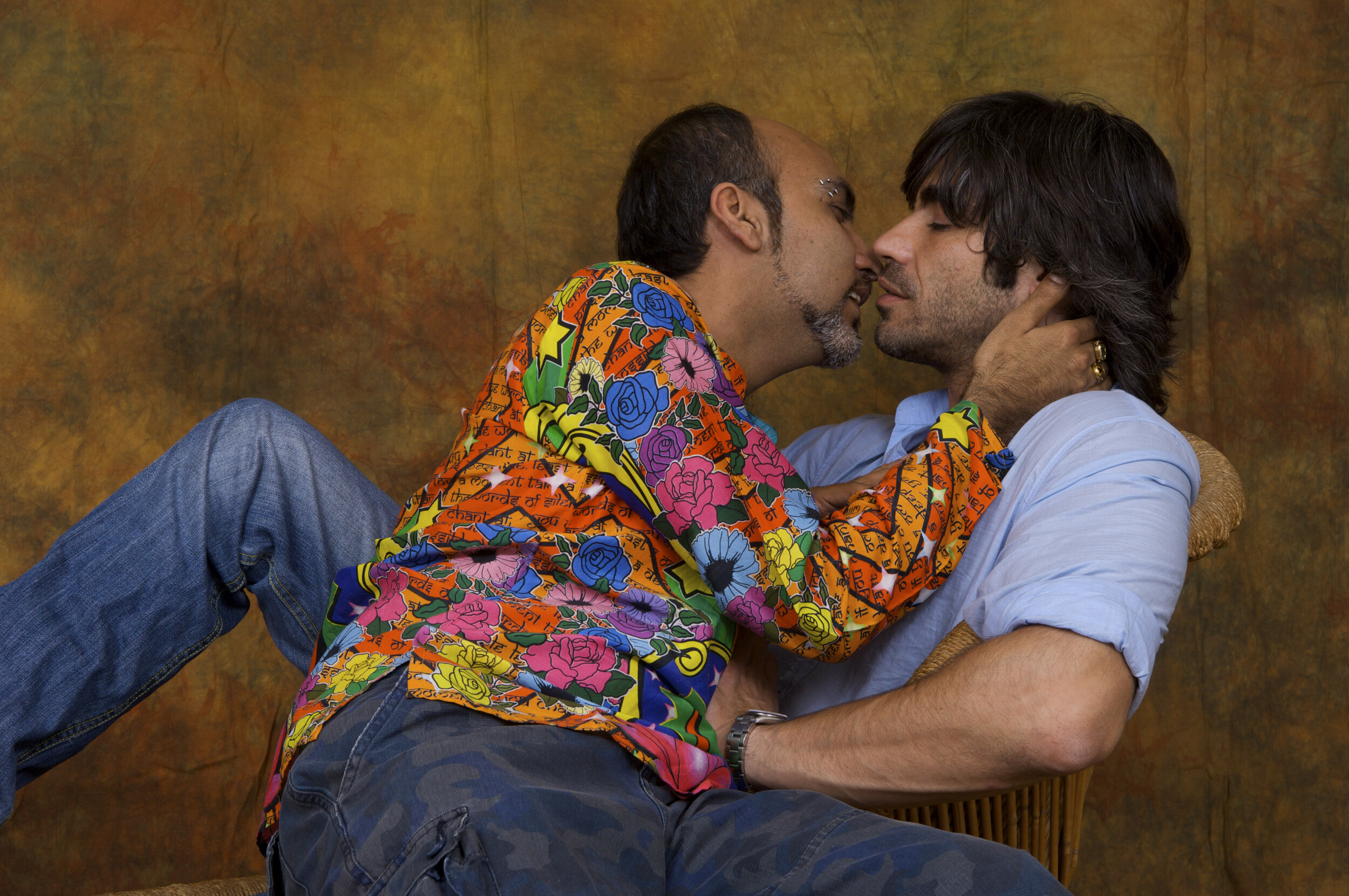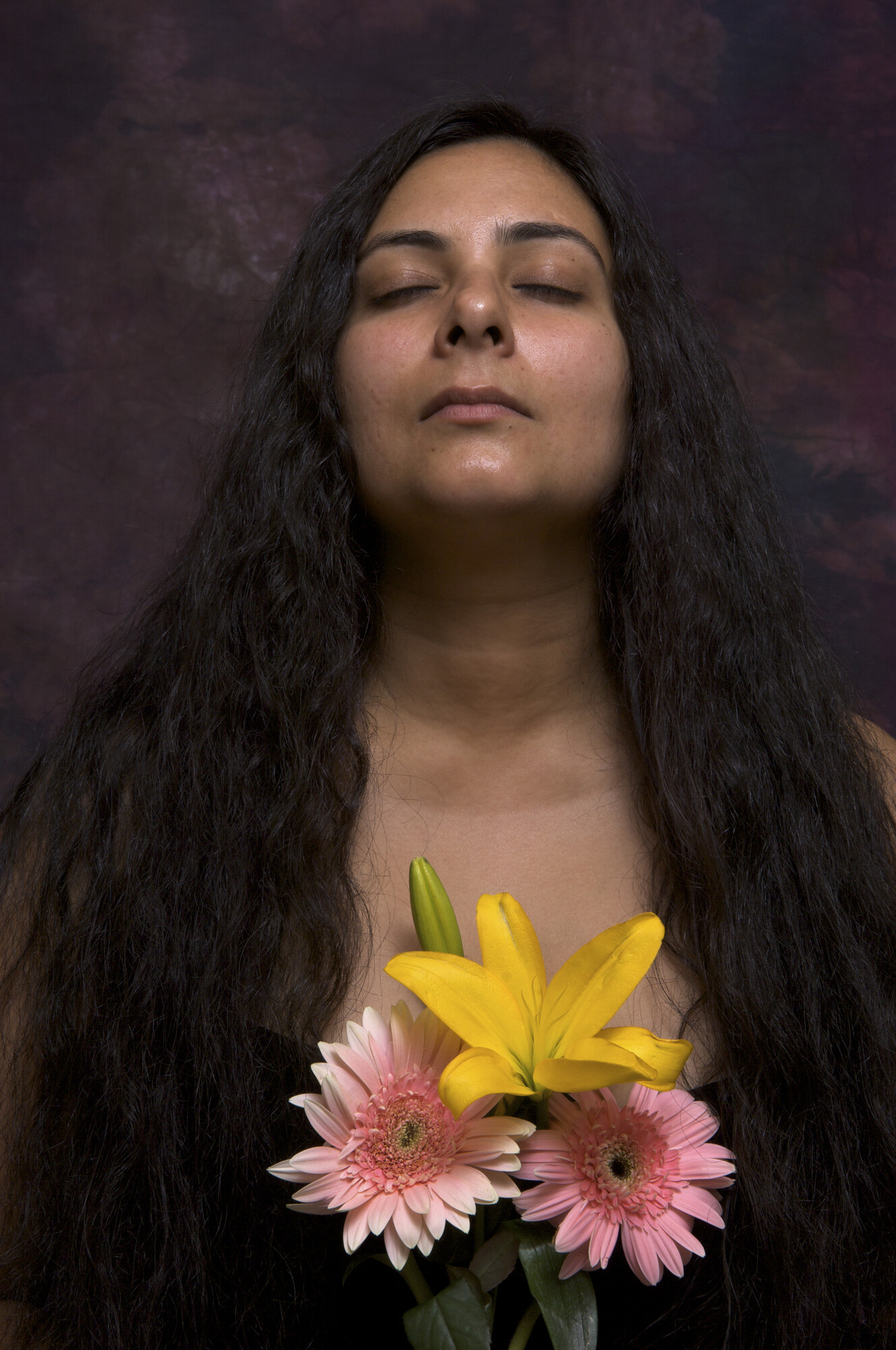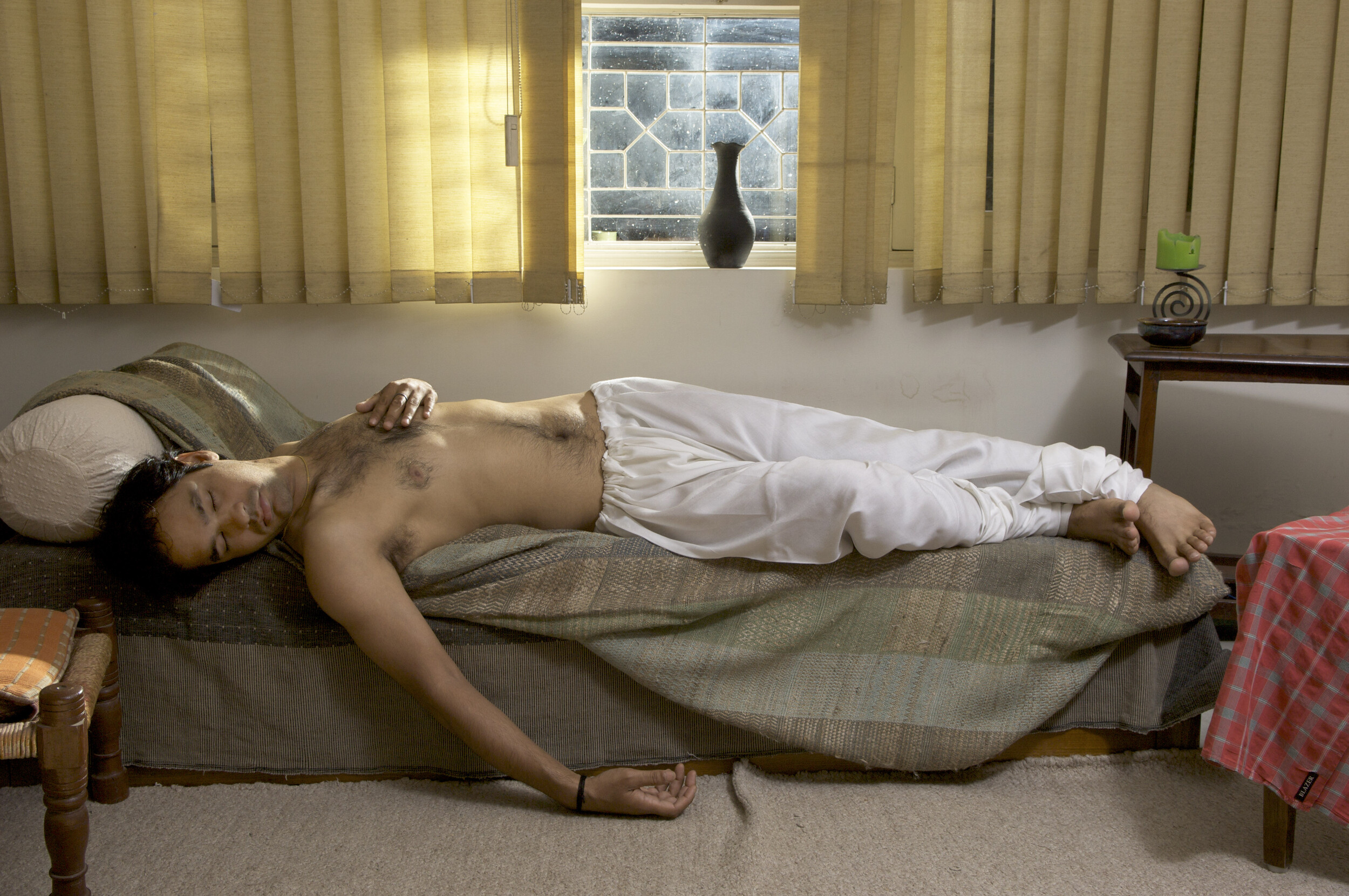Sunil Gupta: The New Pre-Raphaelites
Laura Castagnini
The New Pre-Raphaelites is a rare opportunity to see an exhibition by a father of gay photography, Sunil Gupta. It is the first solo exhibition in Australia by the Delhi-born, London-based artist, curator, and activist, who has been at the forefront of gay liberation movements since the 1970s. Over the past four decades Gupta has captured scenes of queer life that have continued to gain in socio-historic importance over time. His work ranges from the iconic series Christopher Street (1976), which documented gay men cruising the streets of New York City, to Pretended Family Relationships (1987–88), which responded to the UK’s notorious “Clause 28” forbidding the representation of homosexual relationships in public media, to From Here to Eternity (1999), which captured the artist’s own experience living with HIV/AIDS. Whether shot in the streets or the bedroom, Gupta’s work is always deeply personal. He draws from his own circle of friends, lovers, and broader community to make visible people that are struggling for recognition, acceptance, and—in many cases—the decriminalisation of their actions.
Currently showing at Wyndham Art Gallery as part of QueerPhoto, The New Pre-Raphaelites presents a series of photographs commissioned by the British agency Autograph ABP (formerly known as the Association of Black Photographers, and in fact co-founded by Gupta in 1988). Here, Gupta was asked to respond to Section 377 of the Indian Penal Code, a law introduced by the British in 1861 to criminalise all sexual acts “against the order of nature”—widely understood to include consensual homosexual activity—and often used to harass homosexual and transgender people. It took decades of grassroots protest by LGBT+ activists, including by Gupta himself, to eventually overturn this draconian law. After moving back to India in the mid-2000s, Gupta was active in the campaign against section 377. At a time when it was not common in India, he was known to speak openly about his sexuality within the art world and to the media, inspiring others to come out publicly. He was even present at the Delhi High Court to hear the verdict when homosexuality was decriminalised for the first time in 2009; he later recounted: “I cannot tell you how exciting that judgment was … People were crying. My generation never thought we would live to see this.” Sadly, the law didn’t last long, with the Supreme Court overturning the Delhi High Court’s judgement in 2013. The struggle for decriminalisation was reignited and protests continued for several years before Section 377 was finally scrapped in 2018.

Gupta’s photographic series The New Pre-Raphaelites (2008) was created within and in response to this momentous period in Indian history. The images were taken the same year India held its first public Pride parade (on 30 June 2008), giving unprecedented visibility to the human lives being forced into secrecy by Section 377. Gupta’s portraits feature LGBT+ activists in New Delhi, most of whom were involved in the queer collective Nigah that organises public events around issues of gender and sexuality. The subjects are a diversity of ages and gender expressions, posing alone or in couples, in varying states of dress (and undress). Most of the faces are visible, itself a political act during an era of criminalisation. Yet Gupta’s photographs move beyond traditional documentation of a hidden community. Many are shot against colourful fabric studio backdrops in carefully posed scenography, causing the sitter to transcend into a fantastical space imbued with sensuality and poetry.

As indicated by the exhibition’s title, The New Pre-Raphaelites draws on the visual iconography of the nineteenth-century British group known as the Pre-Raphaelites, which included artists such as William Holman Hunt, John Everett Millais, and Dante Gabriel Rossetti. The Pre-Raphaelites were known for their use of sharp detail, luminous colour, and highly charged symbolic gesture to portray religious and mythological subject matter. Gupta’s portraits are each modelled on a different painting associated with the movement; for example, The New Pre-Raphaelites Untitled #02, which features two men passionately embracing, is based on the kissing couple featured in (Rossetti){.underline}’s painting Paolo and Francesca da Rimini (1855). Gupta’s citation becomes especially pointed upon further research into Rossetti’s painting, which I learn illustrates the tragic story of adulterous lovers who were later murdered and banished to hell for their sins. Other references are more subtle; The New Pre-Raphaelites Untitled #06 is based on Millais’s painting Mariana (1851), which depicts a Shakespearean character whose marriage was called off by her fiance after her dowry was lost in a shipwreck. Millais’s subject (and, in turn, Gupta’s) stands wearily by the window, seeming to stretch her back after sitting too long, waiting anxiously for news that her isolated existence might end and she can unite with her beloved. In Gupta’s photograph, her weary pose suggests the long battle for decriminalisation as well as hope for a romantic future. Without descriptive wall labels at Wyndham Art Gallery, however, most of the exhibition’s references are lost on the general viewer without an encyclopedic pictorial knowledge of British art history (including myself—the references cited above were helpfully drawn from David Sequeria’s catalogue essay, which analyses four of the thirteen works). Thus, the exhibition can be understood less as a specific transhistorical dialogue between Gupta and individual pictures by the Pre-Raphaelites and more of a conversational hum.


To me, Gupta’s portraits are mysterious, suggestive of a private symbology that echoes the Pre-Raphaelites, but are queer-coded. They suggest signifiers used by queer people to communicate to one another, signifiers which have emerged all over the world and enable us to find sex and community when overt language is too dangerous. These codes are usually rooted in gesture or fashion, from limp wrists and dandy attire to the “hanky code” and keys attached to carabiners, but often consist of more subtle cues that are difficult to pinpoint. This is the case in several of Gupta’s portraits, which could be said to evoke a queer “atmosphere.” Many of the portraits feature people alone, eyes closed, lost in a private reverie. The New Pre-Raphaelites #15 features a man wearing only a slightly unbuttoned shirt, its bright blue colour echoing the paint of the flaking wall he leans against languidly. The composition is filled with sumptuous textures, delicate outlines of palm trees and moody shadows, which suggest the privacy of a domestic courtyard. I recognise the sitter as Charan Singh, Gupta’s now husband, whom he met the same year as the portrait was taken, and cannot help but to read an undertone of desire and longing that can be fulfilled only behind closed doors. A similar tone is evident in The New Pre-Raphaelites #7 and The New Pre-Raphaelites #4. The New Pre-Raphaelites #7 features a shirtless sitter sleeping peacefully on a chaise longue as sunlight creeps into the room through partially opened vertical blinds. The New Pre-Raphaelites #4 is based on Millais’s The Bridesmaid (1851), depicting the face and torso of a woman with long flowing hair who is holding flowers to her chest. Gupta has omitted the bottom section of Millais’s composition, which depicts his sitter performing the Victorian marriage ritual in which a woman passes a small piece of wedding cake through a ring nine times—thought to conjure the vision of her future husband. In a culture where (heterosexual) marriage is an important social institution, Gupta’s revision points to the difficult position for queer people who are expected to marry the opposite sex and closet their sexuality. Gupta sets his sitters free of this pressure, allowing them to close their eyes and dream of alternative futures.

Although The New Pre-Raphaelites are certainly powerful and beautiful images, I must admit that I was initially skeptical about the curatorial choice to exhibit this series by Gupta, almost twenty years after it was made. Why this series, instead of one of his early works cited above? Or indeed a new work, such as the two-part powerful series Songs of Deliverance (2022), made during a year-long residency in London hospitals that focuses on people living with HIV and gender affirmation surgery for transgender women? Instead, The New Pre-Raphaelites responds to a socio-political issue that has become resolved since the work was made. Homosexuality is now legal in India. How does a viewer encounter the work today? Has it lost its original political and emotional weight?
These questions are not answered in the exhibition itself, but I am given an answer via the international news. The same week that I visit Gupta’s exhibition, Ghana’s parliament voted to pass an anti-LGBT+ legislation that intensifies the existing criminalisation of homosexuality by adding a prison sentence of up to five years for the “willful promotion, sponsorship, or support of LGBTQ+ activities.” Activists and lawyers have condemned the bill, arguing it is a setback for human rights and are urging the president to reject it (the bill needs to be validated by the president before entering into law), although there is widespread support in Ghana. On hearing this news, I reflect that the path to LGBT+ rights is not clear cut—that Gupta’s photographs do not diminish in importance now that decriminalisation in India has been won. For one thing, Section 377 is still in place in several former British colonies, including Bangladesh, Malaysia, Myanmar, Pakistan, and Sri Lanka (where it is known as Section 365, although experts say it is likely to be overturned this year). And, as we saw in 2013, the law is slippery and can easily slide backwards. Gupta’s photographs remind us that LGBT+ rights cannot be taken for granted, and that our struggles are interconnected. They remind us that we must remain vigilant and we must stay visible.
Laura Castagnini is a curator and writer from Naarm Melbourne.


